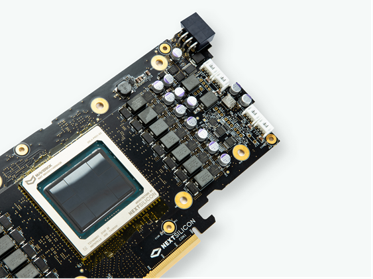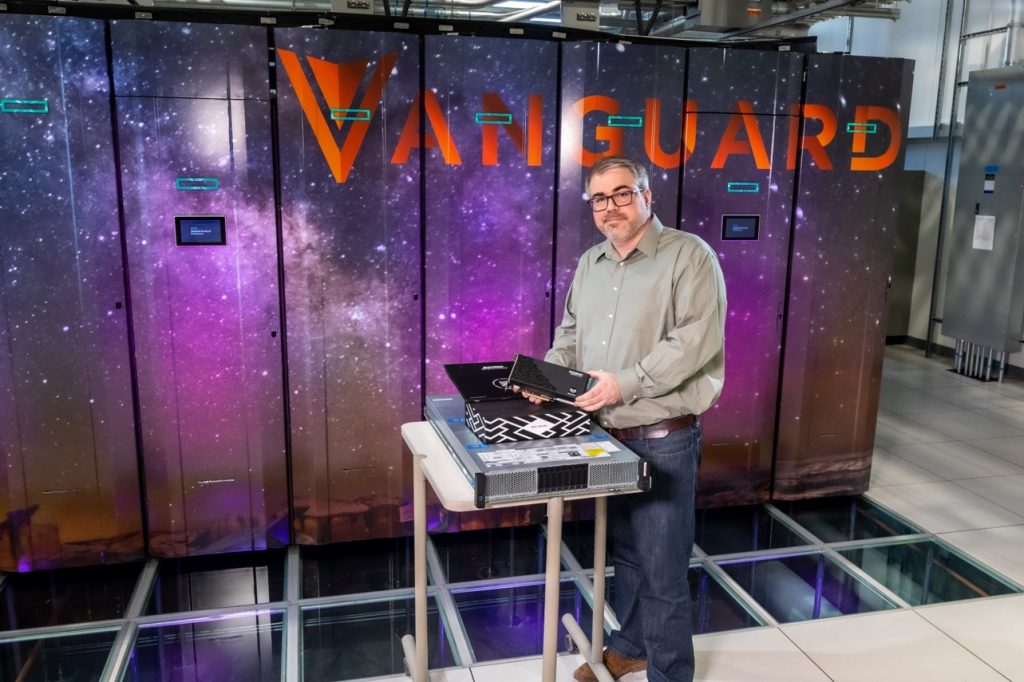
Sandia National Laboratories, leading a tri-lab consortium with Lawrence Livermore National Laboratory (LLNL) and Los Alamos National Laboratory (LANL), announces a partnership with NextSilicon Inc. and Penguin Solutions to deliver the next Advanced Architecture Prototype System (AAPS). These prototype systems are an important part of the National Nuclear Security Administrations (NNSA) platform strategy.
The system will be delivered as part of Sandia’s Vanguard program. The program is tasked with identifying and evaluating emerging technologies that have not yet been tested or deployed to determine their viability to support the NNSA’s Advanced Simulation and Computing (ASC) program.
“The Advanced Architecture Prototype Systems play a critical risk mitigation role for the NNSA by investigating emerging technologies at a time when laboratory influence can result in more beneficial outcomes for the Department of Energy (DOE) and the wider High Performance Computing (HPC) community,” said ASC Program Director Thuc Hoang. “This maximizes the potential for the technology to be applied as part of future large-scale production systems.”
Sandia has been partnering with NextSilicon for more than three years on their hardware and software technology. Early examples of this new technology will be delivered and tested in 2024, followed closely by the delivery of Spectra, the second Vanguard prototype platform deployment.
“NextSilicon represents a groundbreaking new era in computing by utilizing intelligent algorithms to identify and accelerate critical path performance on our hardware. We are confident that our unique approach will enable Sandia and the tri-labs to accelerate applications that have been difficult to optimize on traditional architectures,” said Elad Raz, Founder and CEO of NextSilicon.
NextSilicon is developing a novel compute platform focused on the HPC market. NextSilicon uses intelligent software algorithms to dynamically reconfigure their hardware to optimize performance based on runtime telemetry. This novel approach has potential to deliver both performance and power benefits compared to traditional processors executing the same applications.

“We are excited about the opportunity to work in close collaboration with the technical team at Sandia to enable outstanding performance on their most important applications. This unique partnership provides enormous benefits to both Sandia and NextSilicon. It is a key enabler for NextSilicon in bringing our ground-breaking technology to market faster and with higher quality than could be achieved on our own,” said Kelly Marquardt, VP of Business Development for NextSilicon.
NextSilicon’s technology will be integrated and delivered to Sandia by Penguin Solutions, experts in AI, HPC, and accelerated computing at scale. Penguin Solutions is a part of Intelligent Platform Solutions, a business unit of SGH.
Sandia has partnered with Penguin since 2010, delivering testbeds for Sandia’s Advanced Architecture Testbed program. For the Advanced Architecture Prototype System, Penguin will take on the task of integrating this ‘first of its kind’ device into a high-density Open Compute Platform (OCP) form factor. The resulting racks will be liquid cooled using a Chilldyne liquid cooling system, which will improve data center energy efficiency. Penguin’s ability to accomplish complex integration of today’s bleeding-edge technologies has been demonstrated by their proven track record of successful deployments.
“Penguin Solutions is excited to be working with Sandia and the tri-labs on a custom system to satisfy the latest Advanced Architecture Prototype Systems program,” said Phil Pokorny, Chief Technology Officer for Intelligent Platform Solutions at SGH. “We value our continuing relationship with Sandia and the labs and look forward to introducing these new technologies we’ve partnered on to the HPC community.”
Sandia and the tri-labs, partnering with NextSilicon and Penguin will work together to evaluate this novel technology and eventually test production ASC codes. The first Vanguard deployment, Astra, added Arm-based processors to the list of viable technologies to the ASC programs simulation arsenal. Astra was the first peta-scale Arm-based HPC platform. Arm-based processors will be part of the Venado platform soon to be deployed at LANL.

(Photo by Sandia)
“NextSilicon’s focus on HPC is an important part of why this next-generation technology was selected for investigation by the Vanguard program,” said James H. Laros III, Distinguished Member of Technical Staff at Sandia and Vanguard program lead. “I look forward to partnering with Penguin and NextSilicon to deliver this novel technology which will allow our scientists to run their applications on a new novel device without the need to rewrite their codes.”
These collaborative partnerships between the national laboratories and U.S. industry are highly advantageous to the maturation and testing of emerging technologies. The combination of an emerging technology provider and a seasoned integrator is key to the success of this project.
About NNSA: Established by Congress in 2000, NNSA is a semi-autonomous agency within the U.S. Department of Energy responsible for enhancing national security through the military application of nuclear science. NNSA maintains and enhances the safety, security, and effectiveness of the U.S. nuclear weapons stockpile; works to reduce the global danger from weapons of mass destruction; provides the U.S. Navy with safe and militarily effective nuclear propulsion; and responds to nuclear and radiological emergencies in the United States and abroad.
May 8, 2024